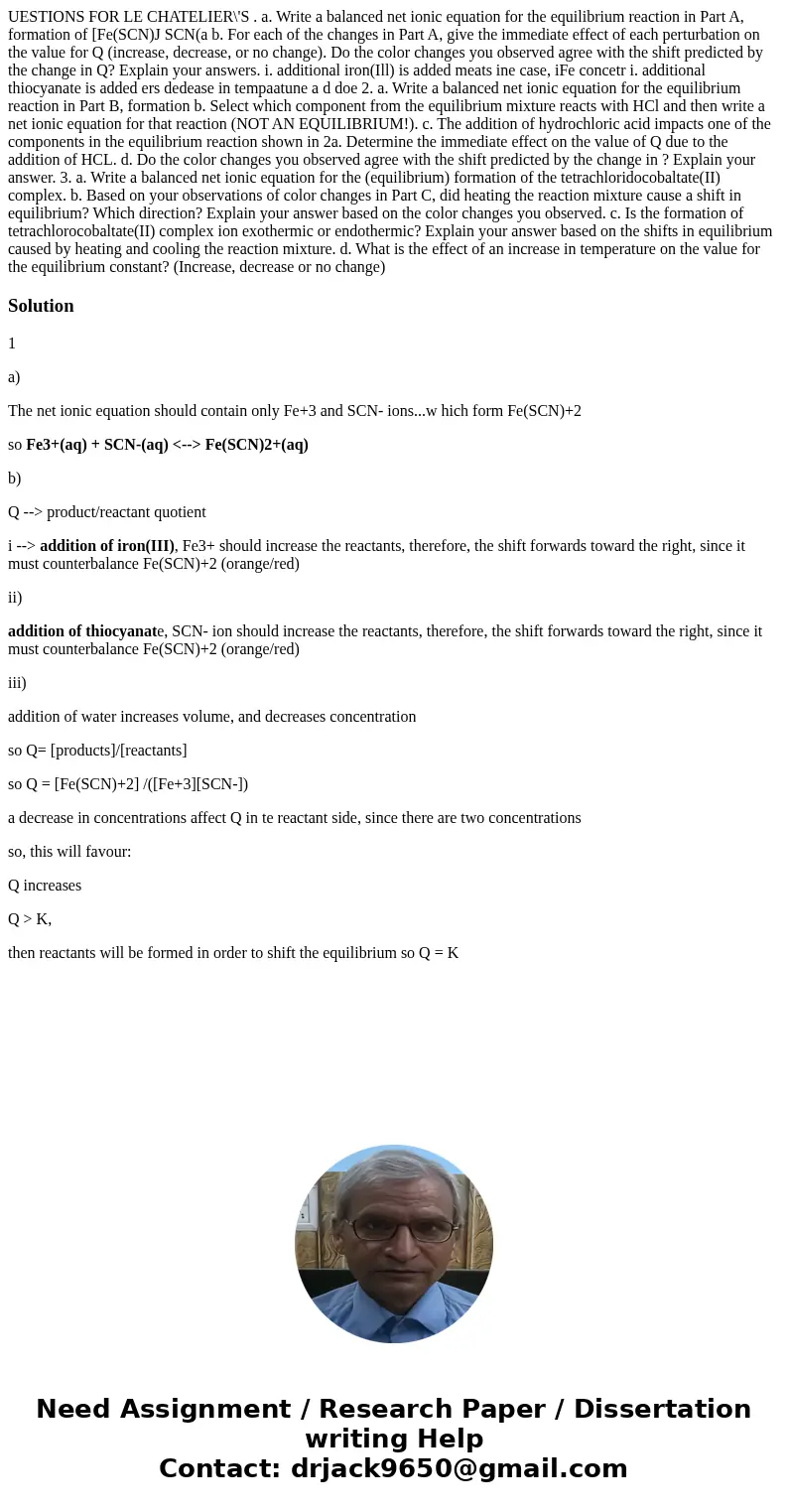UESTIONS FOR LE CHATELIER\'S . a. Write a balanced net ionic equation for the equilibrium reaction in Part A, formation of [Fe(SCN)J SCN(a b. For each of the changes in Part A, give the immediate effect of each perturbation on the value for Q (increase, decrease, or no change). Do the color changes you observed agree with the shift predicted by the change in Q? Explain your answers. i. additional iron(Ill) is added meats ine case, iFe concetr i. additional thiocyanate is added ers dedease in tempaatune a d doe 2. a. Write a balanced net ionic equation for the equilibrium reaction in Part B, formation b. Select which component from the equilibrium mixture reacts with HCl and then write a net ionic equation for that reaction (NOT AN EQUILIBRIUM!). c. The addition of hydrochloric acid impacts one of the components in the equilibrium reaction shown in 2a. Determine the immediate effect on the value of Q due to the addition of HCL. d. Do the color changes you observed agree with the shift predicted by the change in ? Explain your answer. 3. a. Write a balanced net ionic equation for the (equilibrium) formation of the tetrachloridocobaltate(II) complex. b. Based on your observations of color changes in Part C, did heating the reaction mixture cause a shift in equilibrium? Which direction? Explain your answer based on the color changes you observed. c. Is the formation of tetrachlorocobaltate(II) complex ion exothermic or endothermic? Explain your answer based on the shifts in equilibrium caused by heating and cooling the reaction mixture. d. What is the effect of an increase in temperature on the value for the equilibrium constant? (Increase, decrease or no change)
1
a)
The net ionic equation should contain only Fe+3 and SCN- ions...w hich form Fe(SCN)+2
so Fe3+(aq) + SCN-(aq) <--> Fe(SCN)2+(aq)
b)
Q --> product/reactant quotient
i --> addition of iron(III), Fe3+ should increase the reactants, therefore, the shift forwards toward the right, since it must counterbalance Fe(SCN)+2 (orange/red)
ii)
addition of thiocyanate, SCN- ion should increase the reactants, therefore, the shift forwards toward the right, since it must counterbalance Fe(SCN)+2 (orange/red)
iii)
addition of water increases volume, and decreases concentration
so Q= [products]/[reactants]
so Q = [Fe(SCN)+2] /([Fe+3][SCN-])
a decrease in concentrations affect Q in te reactant side, since there are two concentrations
so, this will favour:
Q increases
Q > K,
then reactants will be formed in order to shift the equilibrium so Q = K

 Homework Sourse
Homework Sourse